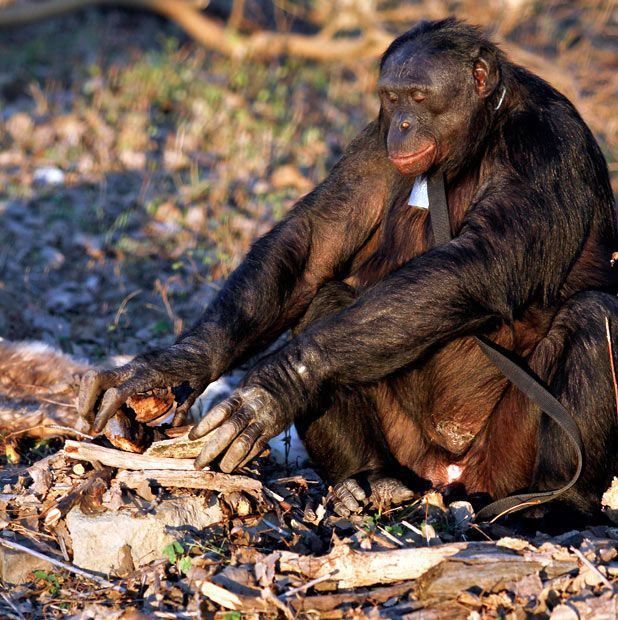|
|
Kanzi, 31-year-old Food Cooking Bonobo Chimpanzee
|
Physical description
It is commonly considered to be more gracile than the common chimpanzee, and females are somewhat smaller than males. Body mass in males ranges from 34 to 60 kg (75 to 130 lb), against an average of 30 kg (66 lb) in females. The total length of bonobos (from the nose to the rump) is 70 to 83 cm (28 to 33 in). Its head is also smaller than that of the common chimpanzee with less prominent brow ridges above the eyes. It has a black face with pink lips, small ears, wide nostrils, and long hair on its head that forms a part. Females have slightly more prominent breasts, in contrast to the flat breasts of other female apes, although not so prominent as those of humans. The bonobo also has a slim upper body, narrow shoulders, thin neck, and long legs when compared to the common chimpanzee.
Bonobos are both terrestrial and arboreal. Most ground locomotion is characterized by quadrupedal knuckle walking. Bipedal walking has been recorded as less than 1% of terrestrial locomotion in the wild, a figure that decreased with habituation, while in captivity there is a wide variation. Bipedal walking in captivity, as a percentage of bipedal plus quadrupedal locomotion bouts, has been observed from 3.9% for spontaneous bouts to nearly 19% when abundant food is provided. These physical characteristics and its posture give the bonobo an appearance more closely resembling that of humans than that of the common chimpanzee. The bonobo also has highly individuated facial features, as humans do, so that one individual may look significantly different from another, a characteristic adapted for visual facial recognition in social interaction.
Multivariate analysis has shown bonobos are more neotenized than the common chimpanzee, taking into account such features as the proportionately long torso length of the bonobo. Other researchers challenged this conclusion.
|
|









